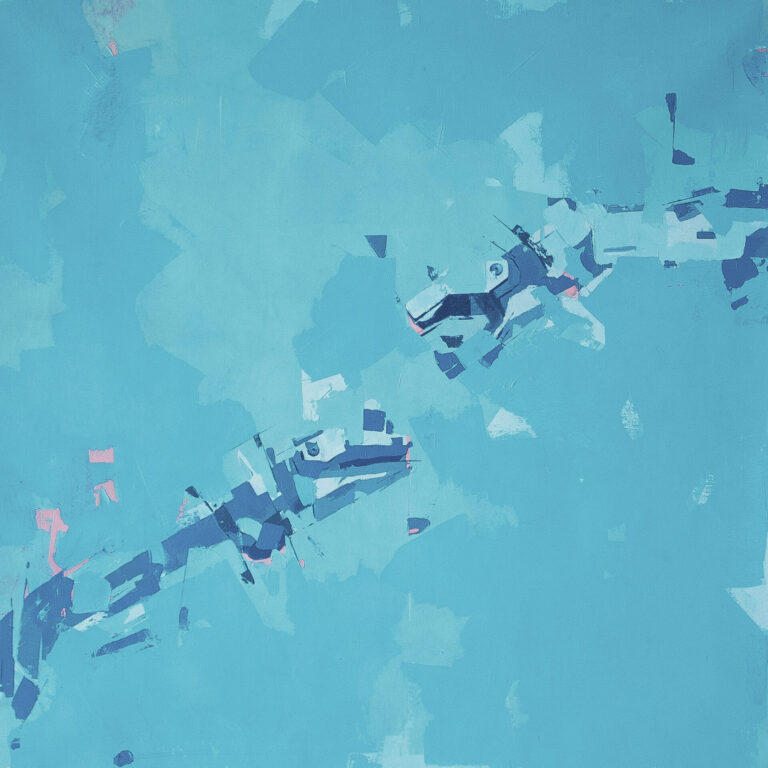Agnieszka PILAT: Thinking Machines: Renaissance 2.0
Sep 23 — Oct 31, 2021
When Agnieszka Pilat first met Spot, she was astonished by the robotic dog’s ability to climb a staircase with lifelike agility. As a painter with a deep interest in innovation, Pilat was reminded of one of the 20th century’s most innovative paintings, Nude Descending a Staircase (No. 2), by Marcel Duchamp. In his 1912 canvas, Duchamp depicted the movement of a nude woman as a series of superimposed frames, much as a machine might perceive and analyze human motion. As an artist-in-residence at Boston Dynamics – the manufacturer of Spot – Pilat was inspired to portray the innovative bio-inspired machine as Duchamp might have done.
Over the past decade, Pilat has deployed her classical training to work at the intersection of technological progress and artisanal tradition. The twelve canvases featured in her first exhibition at Modernism Gallery are meticulously executed in oil on linen, taking inspiration from Leonardo da Vinci and Michelangelo, as well as Marcel Duchamp. But her art is no mere copy of the masters. She has not only replaced their human subjects with robots, but also ingeniously portrayed these new entities in a gestural language evocative of robotics.
To explore these issues, Pilat has sought to embody the cutting-edge technology she witnessed at Boston Dynamics by making multiple copies of the same image. For instance, she has painted her version of Nude Descending a Staircase twice. The paintings are in different color palettes, both evocative of the Pop art of Andy Warhol, who famously said “I’d like to be a machine”. However, the difference in colors is only the most obvious contrast evident in her two paintings. Unlike Warhol, who used mechanical techniques such as silkscreening in his best-known pieces, Pilat has worked by hand, resulting in expressive discrepancies in every detail. Her efforts to paint like a robot paradoxically betray her humanity.
For Pilat, this does not amount to triumph or defeat. As she observes, “Machines are humanity’s children.” In this familial relationship, neither is inherently superior – let alone an existential threat to the other – though she acknowledges that “machines are today’s celebrities, perhaps even the aristocracy of the 21st century”. By painting their portraits, she carries on a tradition stretching from Renaissance studios to Warhol’s Factory of the 1960s.
The majority of work in her Modernism exhibition focuses on the Renaissance, with images derived from Leonardo’s Vitruvian Man and Michelangelo’s Sistine Chapel fresco. Pilat sees an important connection between the Renaissance and the present moment, especially evident to her as an artist based in Silicon Valley. “Much as innovation changed the world during the Renaissance, innovators in the Bay Area and the Boston region are changing the world today,” she says. In tribute to this history, and referencing the language of software iteration, she has dubbed her new series Renaissance 2.0.
Check gallery website for hours and additional info



